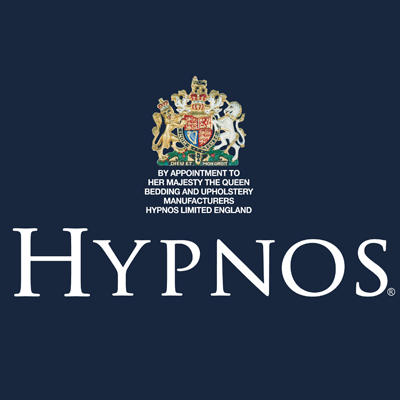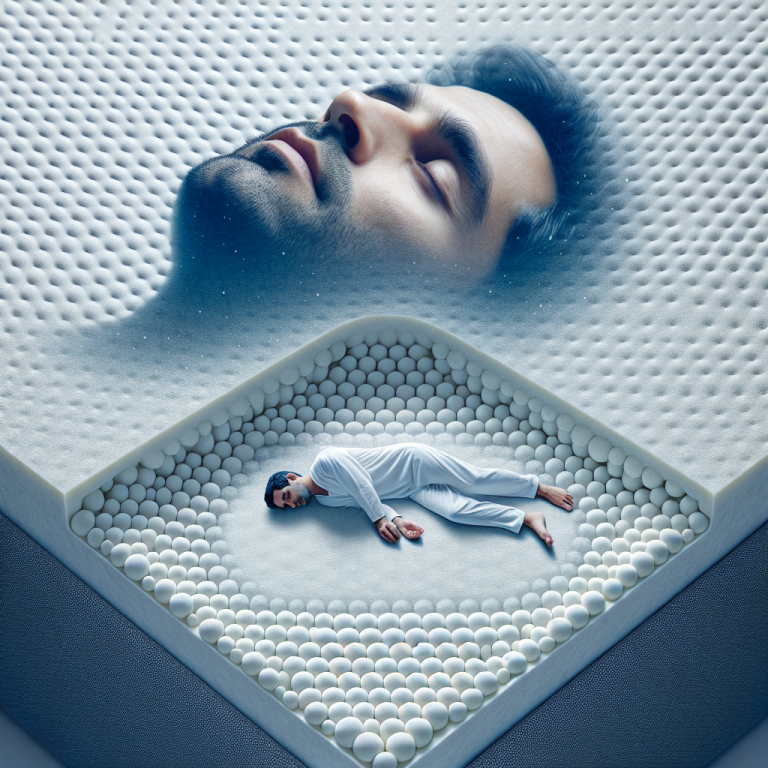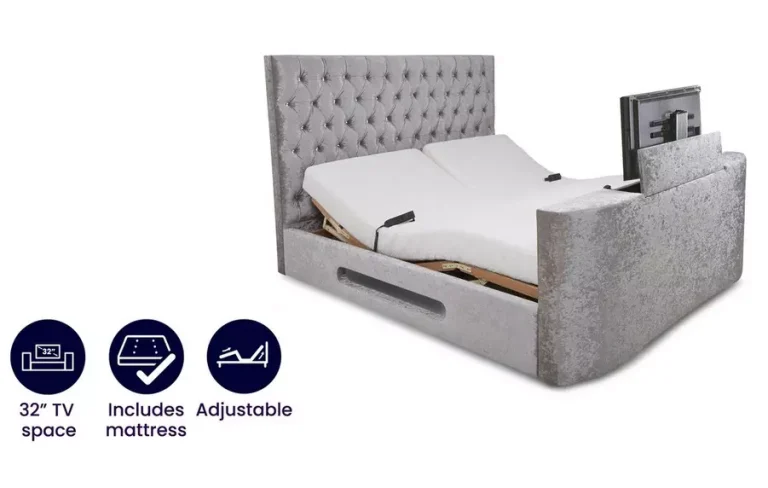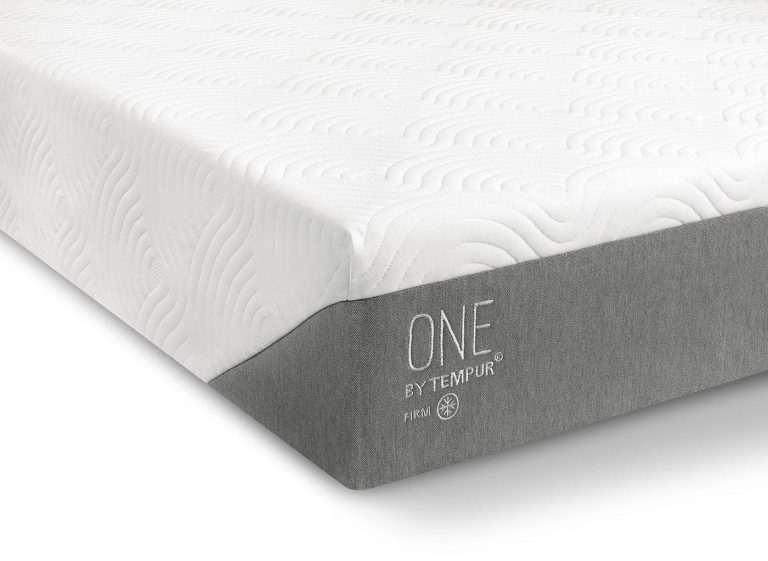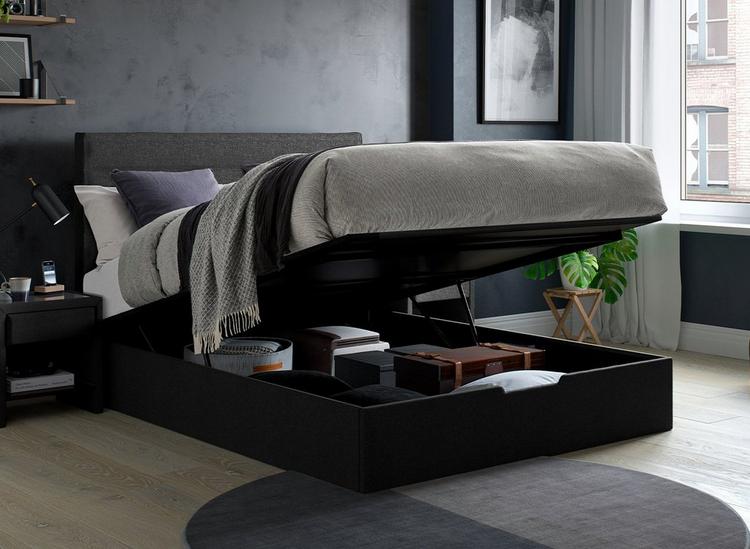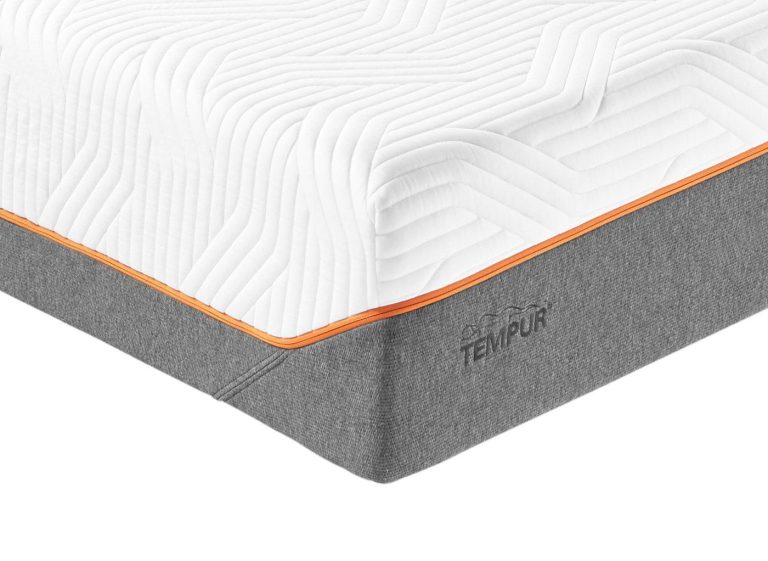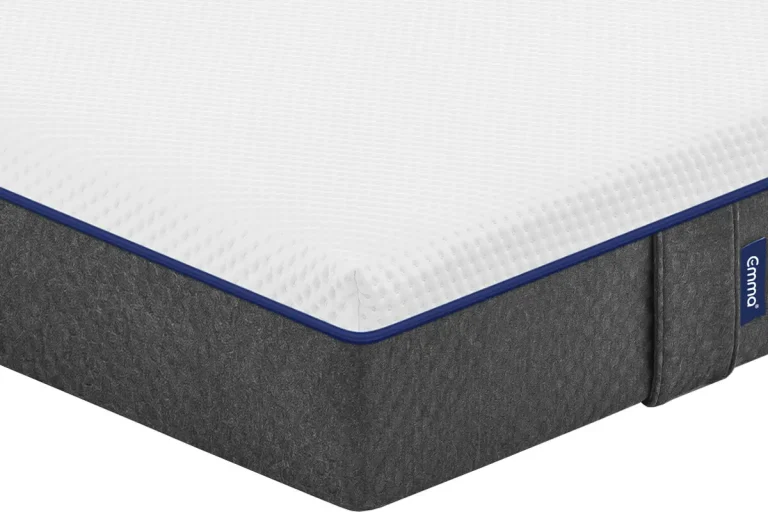In this article, we’ll explore the possible connection between mattresses and insomnia. You will learn about the factors that can contribute to sleep difficulties and how mattresses might play a role in improving sleep quality. We’ll also discuss different types of mattresses and what to consider when choosing the right one for better sleep. So, if you’ve been struggling to get a good night’s sleep, keep reading to find out if your mattress could be a contributing factor.
Table of Contents
ToggleUnderstanding Insomnia
Insomnia explained
Insomnia is a common sleep disorder that affects millions of people worldwide. It is characterised by difficulty falling asleep, staying asleep, or both. People with insomnia often feel restless, fatigued, and have trouble concentrating during the day. Insomnia can have a significant impact on a person’s overall quality of life, affecting their mood, productivity, and overall well-being.
Common causes of insomnia
There are several common causes of insomnia, including stress, anxiety, depression, certain medications, and medical conditions such as sleep apnea. Poor sleep habits, such as irregular sleep schedules and excessive screen time before bed, can also contribute to insomnia. Additionally, an uncomfortable sleep environment, including an unsupportive mattress, can exacerbate sleep problems and make insomnia worse.
Impact of insomnia on daily life
Insomnia can have a profound impact on daily life. Lack of quality sleep can lead to irritability, impaired cognitive function, and difficulty concentrating. It can affect job performance, personal relationships, and overall mood. Insomnia can also increase the risk of accidents and injuries, as well as contribute to the development of other health conditions such as obesity, diabetes, and cardiovascular disease.
Role of Mattresses in Sleep Quality
Importance of sleep environment
Creating a sleep-friendly environment is essential for quality sleep. The sleep environment includes factors such as temperature, noise level, lighting, and, most importantly, your mattress. A comfortable and supportive mattress plays a crucial role in promoting restful sleep and minimising sleep disturbances.
The connection between mattresses and sleep
Your mattress significantly impacts your sleep quality. If your mattress is uncomfortable, lacks support, or causes pain, it can disrupt your sleep and contribute to insomnia. On the other hand, a high-quality mattress that suits your individual needs can provide a comfortable sleeping surface and promote healthy sleep patterns.
Factors to consider when choosing a mattress
When choosing a mattress, there are several factors to consider. First and foremost, you need to determine your preferred sleeping position—whether you sleep on your side, back, or stomach. Different positions require different levels of support and firmness. Additionally, you should assess any specific sleep issues or conditions you may have, such as back pain or allergies, and choose a mattress that addresses these concerns. Lastly, consider your personal preferences, such as the mattress’s material, size, and budget.
Mattress Features for Insomnia Relief
Supportive mattress materials
The choice of mattress material can significantly impact its supportive qualities. Memory foam mattresses, for example, contour to your body and provide excellent support. Latex mattresses are also known for their supportive properties, as they conform to your body shape while offering resiliency. Both memory foam and latex mattresses can help alleviate pressure points and provide a comfortable sleep surface for individuals with insomnia.
Mattress firmness and insomnia
The firmness level of a mattress plays a crucial role in sleep quality, especially for individuals with insomnia. While the optimal firmness level varies from person to person, medium-firm mattresses are generally recommended as they provide a balance of support and comfort. A mattress that is too soft can cause the body to sink too deeply, leading to misalignment and discomfort, while a mattress that is too firm lacks proper contouring and may cause pressure points.
Pressure relief and comfort layers
Pressure relief is another important factor to consider when selecting a mattress for insomnia relief. Comfort layers, such as pillow tops or foam layers, can provide additional cushioning and distribute weight evenly, relieving pressure points and promoting better sleep. These comfort layers can enhance the overall comfort and support of the mattress, helping to alleviate any discomfort or pain that may contribute to insomnia.
Effect of Mattress on Sleep Position
Various sleep positions and insomnia
Different sleep positions require different levels of support to ensure proper spinal alignment. Side sleepers, for example, need a mattress that contours to their body shape and relieves pressure points, especially around the shoulders and hips. Back sleepers benefit from a slightly firmer mattress that provides adequate support to maintain the natural curvature of the spine. Stomach sleepers typically require a firm mattress to prevent excessive sinking and strain on the neck and back.
Selecting a mattress based on sleep position
When choosing a mattress to alleviate insomnia, it is important to consider your sleep position. If you are a side sleeper, opt for a mattress with medium to soft firmness and significant pressure relief. Back sleepers should prioritise medium-to-firm mattresses that provide ample support. Stomach sleepers, on the other hand, should choose a firm mattress that prevents the lower back from sinking too deeply.
Aligning the spine for better sleep
Proper spinal alignment is crucial for a good night’s sleep. A mattress that promotes spinal alignment can help alleviate discomfort and improve sleep quality, particularly for individuals with insomnia. When lying on your mattress, your spine should maintain a neutral position with a gentle curve in the lower back. A mattress that supports the natural curvature of the spine can ensure proper alignment and prevent any strain or discomfort that may disrupt sleep.
Choosing the Right Mattress for Insomnia
Consultation with sleep professionals
Consulting with sleep professionals, such as mattress specialists or healthcare providers, can provide valuable guidance when choosing a mattress for insomnia relief. These professionals can assess your specific needs and recommend a mattress that suits your individual sleep requirements. They can also help you navigate through the wide range of mattress options available and provide insight into the best choices for insomnia sufferers.
Testing different mattress types
When searching for the right mattress for insomnia, it is essential to test different mattress types in person. Visit mattress stores or showrooms and spend an adequate amount of time lying on each mattress to assess its comfort, support, and overall feel. Testing different mattress types can help you determine which one feels the most comfortable and provides the necessary support for your specific sleep needs.
Considering individual preferences
While there are general guidelines to consider when selecting a mattress for insomnia relief, individual preferences should not be overlooked. Everyone has unique comfort preferences, and what works for one person may not work for another. Take into account factors such as preferred mattress materials, desired firmness level, and any specific preferences that may contribute to a more comfortable and restful sleep experience.
Influence of Mattresses on Sleep Environment
Regulating temperature for better sleep
Temperature regulation is vital for quality sleep, and your mattress can play a significant role in maintaining a comfortable sleep environment. Certain mattress materials, such as memory foam, can retain heat and lead to discomfort for individuals who sleep hot. Alternatively, mattresses with cooling technologies, such as gel-infused foam or breathable fabrics, can help regulate body temperature and promote a cooler and more comfortable sleep.
Reducing allergens and irritants
For individuals with allergies or sensitivities, choosing a mattress that minimises allergens and irritants is crucial. Opting for hypoallergenic or organic mattresses can reduce the presence of dust mites, mould, and other common allergens that can trigger allergy symptoms and disrupt sleep. Additionally, regularly cleaning and maintaining your mattress can help minimise the accumulation of dust and allergens, further promoting a healthier sleep environment.
Minimising partner disturbance
Sharing a bed with a partner can sometimes lead to sleep disturbances, particularly if one or both partners experience insomnia. Mattresses with motion isolation properties, such as memory foam or hybrid mattresses, can minimise motion transfer and reduce disturbances caused by restless partners. This can contribute to a more peaceful sleep environment and help ensure uninterrupted sleep for both individuals.
Exploring Mattress Technologies for Insomnia Relief
Memory foam mattresses and insomnia
Memory foam mattresses have gained popularity in recent years due to their ability to provide excellent support, pressure relief, and comfort. The contouring properties of memory foam can alleviate pressure points, reduce pain, and promote better sleep, making them a suitable choice for individuals with insomnia. Additionally, memory foam mattresses absorb motion, making them an ideal option for couples who have different sleep schedules or experience restlessness during the night.
Latex mattresses for sleep quality
Latex mattresses have also gained recognition for their sleep benefits. They offer a unique combination of responsiveness, comfort, and support. Latex conforms to the body while providing a buoyant and supportive sleep surface. The natural breathability of latex foam helps regulate temperature, preventing excessive heat retention and promoting a cooler sleep environment. Latex mattresses are a popular choice for individuals seeking a more eco-friendly and durable option for insomnia relief.
Hybrid mattresses and their benefits
Hybrid mattresses combine the best features of different mattress types, typically combining an innerspring system with layers of foam or latex. This combination provides a balance of support, responsiveness, and cushioning. Hybrid mattresses are known for their excellent motion-isolation properties and breathability, making them suitable for individuals with insomnia. The hybrid design allows for the customisation of firmness levels and can accommodate a wide range of sleep preferences.
Maintenance and Care of Mattresses
Regular cleaning and mattress hygiene
Maintaining a clean and hygienic mattress is essential for sleep quality and overall health. Regularly cleaning your mattress can help eliminate allergens, dust mites, and other irritants that can disrupt sleep. Vacuuming your mattress, spot-cleaning stains, and washing mattress protectors and bedding regularly can promote a healthier sleep environment and extend the lifespan of your mattress.
Rotating and flipping mattresses
Rotating and flipping your mattress periodically can help prevent sagging and uneven wear, prolong its lifespan and ensure consistent support. However, not all mattresses are designed to be flipped, so be sure to consult the manufacturer’s instructions before attempting to rotate or flip your mattress. If your mattress has specific zones or layers, rotating it from head to foot can help distribute wear evenly and maintain its comfort and support.
Replacing mattresses at the right time
Even with proper maintenance and care, mattresses have a finite lifespan. Over time, they may lose their support, develop sags or lumps, and no longer provide the necessary comfort for a good night’s sleep. While the exact lifespan of a mattress varies depending on factors such as usage, quality, and maintenance, it is generally recommended to replace your mattress every 7 to 10 years for optimal sleep quality and support.
Complementary Solutions for Insomnia
Sleeping aids and accessories
In addition to choosing a supportive mattress, there are other complementary solutions that can help individuals with insomnia. Sleeping aids, such as pillows or mattress toppers designed for specific sleep needs, can provide additional comfort and support. Sleep accessories, such as white noise machines or aromatherapy diffusers, can create a soothing sleep environment and promote relaxation, helping to alleviate insomnia symptoms.
Creating a sleep-friendly routine
Establishing a sleep-friendly routine can significantly improve sleep quality and reduce insomnia symptoms. Consistency is key when it comes to sleep, so try to maintain a regular sleep schedule by going to bed and waking up at the same time every day. Develop pre-sleep rituals, such as avoiding screens before bed and engaging
in relaxation techniques, or taking a warm bath, to signal your body that it’s time to wind down and prepare for sleep.
Addressing underlying health issues
While a supportive mattress and sleep-friendly routine can help manage insomnia, it is essential to address any underlying health issues that may contribute to sleep problems. If your insomnia persists despite your efforts, consult with a healthcare professional or sleep specialist to identify and treat any medical conditions, such as sleep apnea, depression, or anxiety, that may be causing or exacerbating your insomnia.
Conclusion
In conclusion, selecting the right mattress is an important step towards managing insomnia and improving sleep quality. A comfortable and supportive mattress can alleviate pressure points, promote proper spinal alignment, and create a sleep-friendly environment. Consider your sleeping position, personal preferences, and any specific sleep issues you may have when choosing a mattress. Consultation with sleep professionals, testing different mattress types, and maintaining your mattress can further enhance your sleep experience. By recognising the link between mattresses and insomnia, you can take steps towards achieving a restful and rejuvenating night’s sleep.






































